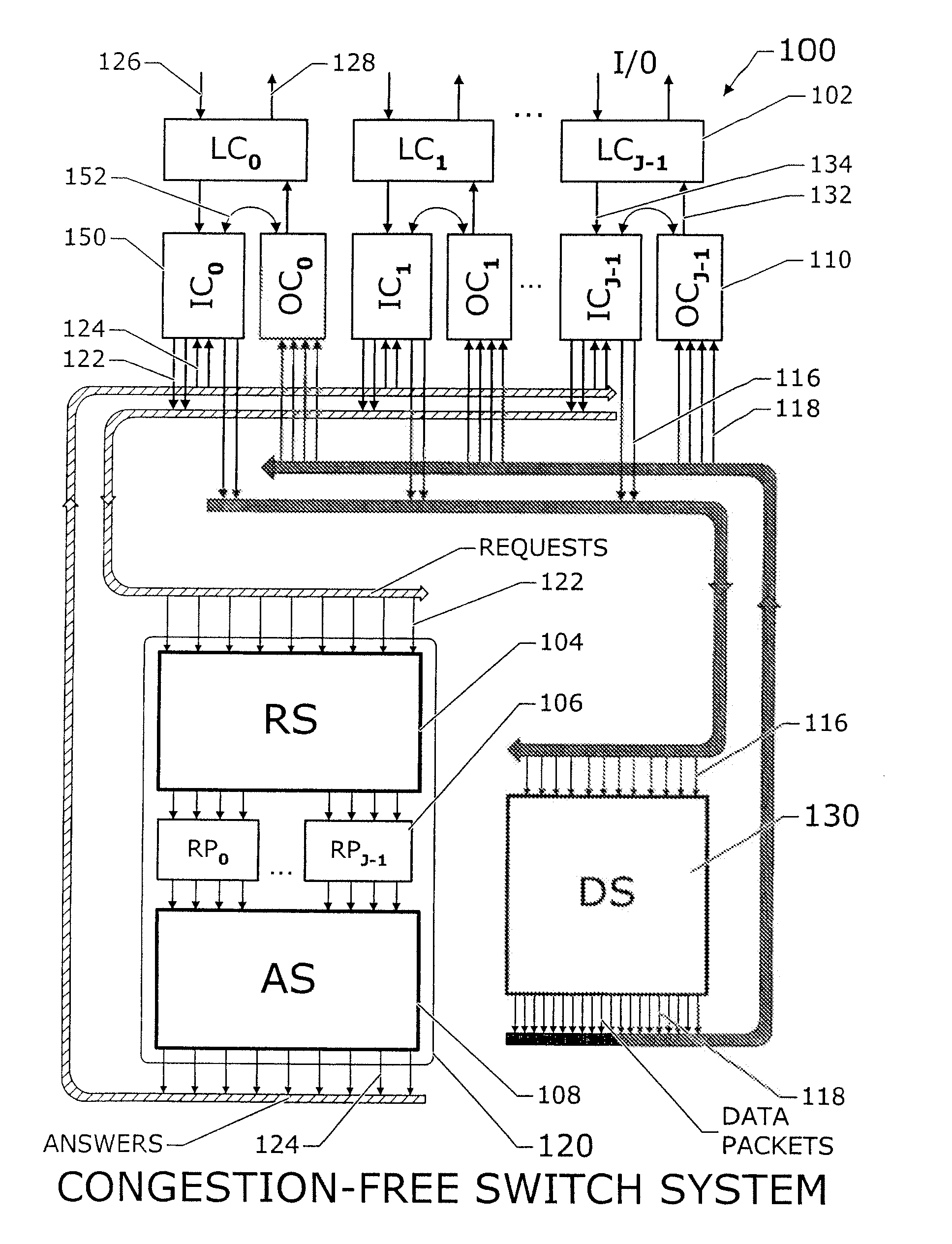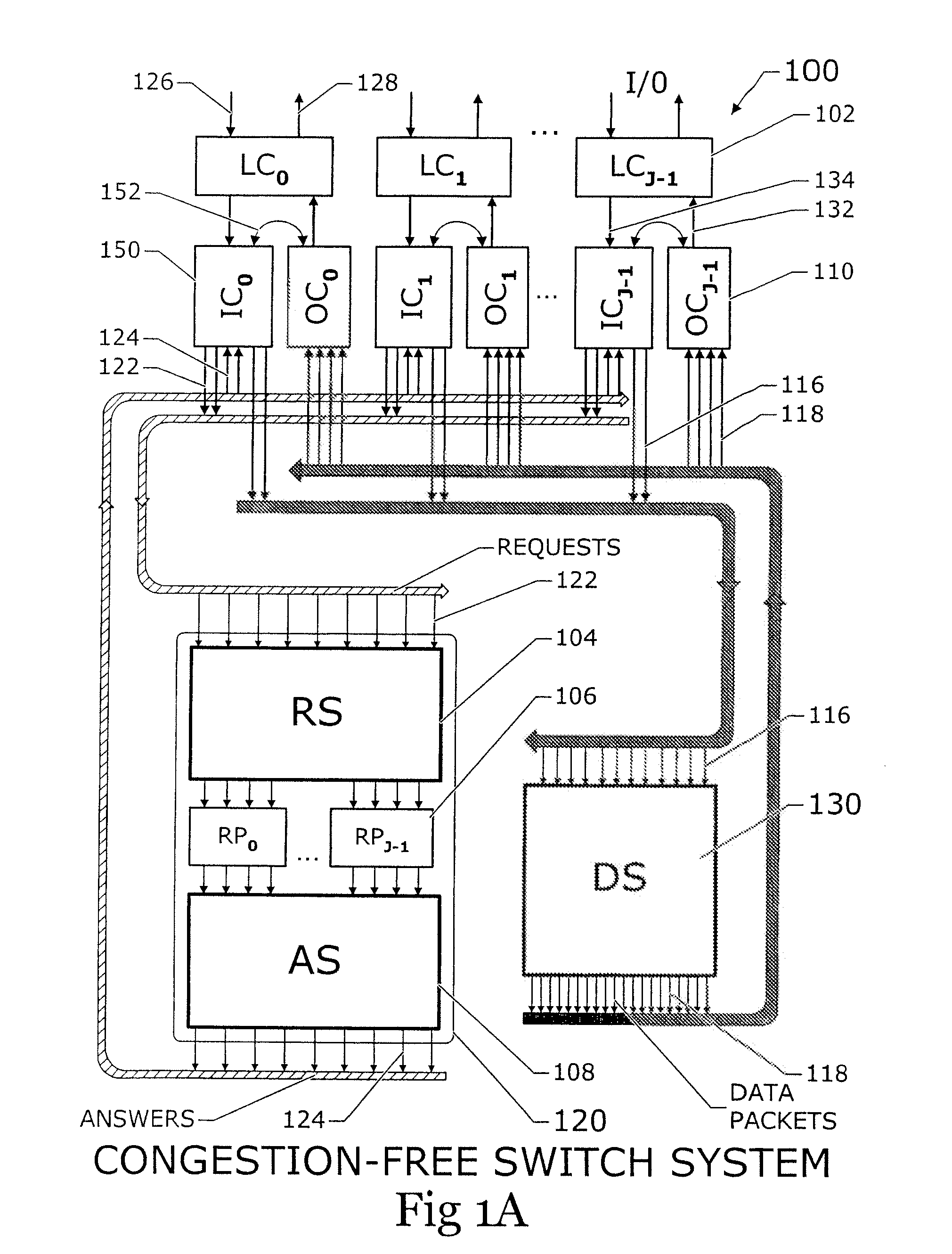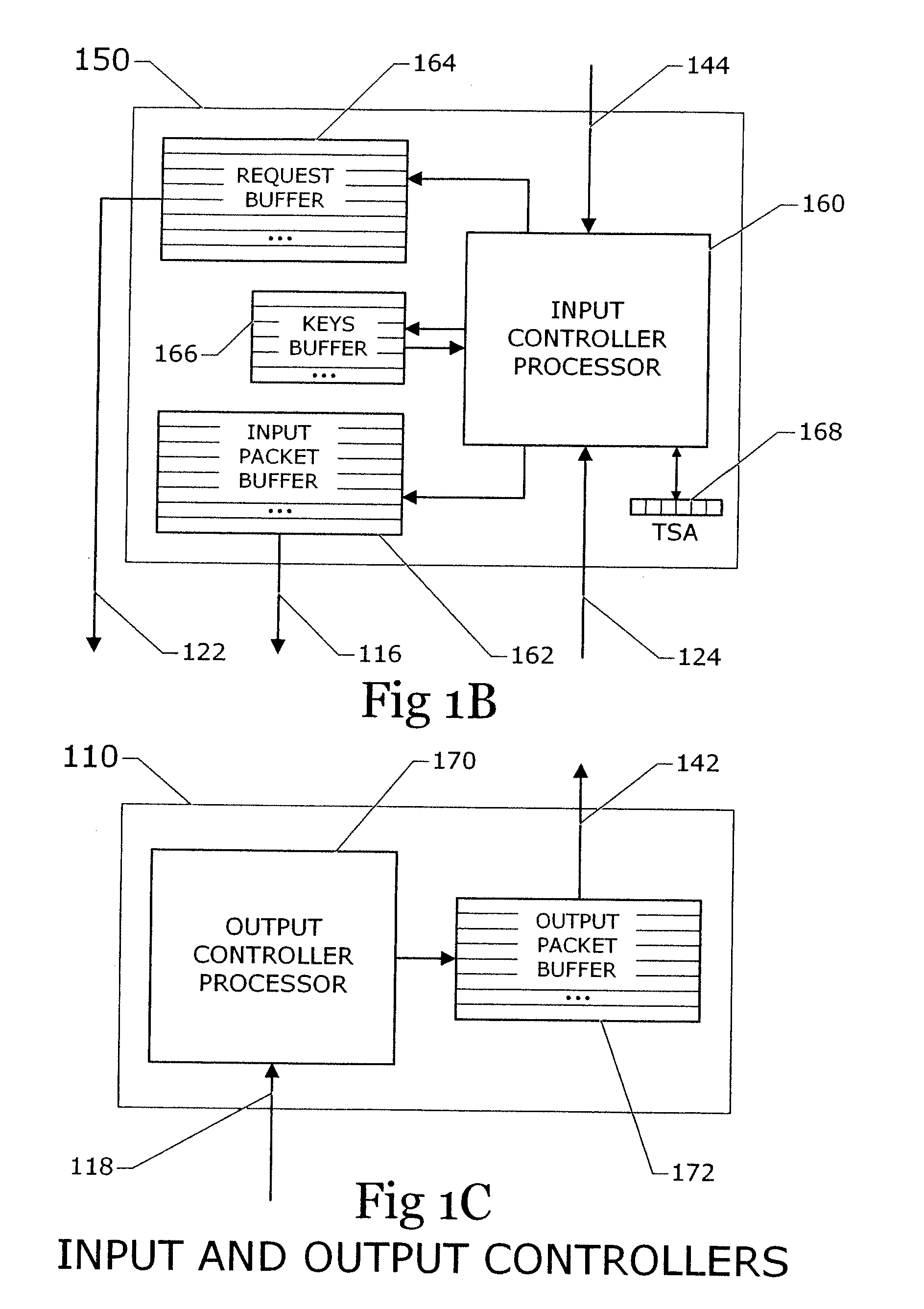Means and apparatus for a scalable congestion free switching system with intelligent control
a technology of intelligent control and switching system, applied in electrical equipment, data switching networks, digital transmission, etc., can solve problems such as problems that cannot be addressed, problems that cannot be solved, and inability to scale up internet switches, so as to reduce the amount of circuitry needed, and simplify processing
- Summary
- Abstract
- Description
- Claims
- Application Information
AI Technical Summary
Benefits of technology
Problems solved by technology
Method used
Image
Examples
second embodiment
[0154] It should be noted that in the case of an embodiment utilizing multiple paths connecting the input and output controllers to the rest of the system, all three switches, RS 104, AS 108, and DS 130, can deliver multiple packets to the same address. Switches with the capability to handle this condition must be used in all three locations. In addition to the obvious advantage of increased bandwidth, this embodiment allows the request processors to make more intelligent decisions since they base their decisions on a larger data set. In a second embodiment, request processors advantageously can send a plurality of urgent packets from one input controller ICn with relatively full buffers to a single output controller OCm, while refusing requests from other input controllers with less urgent traffic.
[0155] Referring also to FIGS. 1B, 1C and 6A, in the operation of system 100 events occur at given time intervals. At time T0, there are a number of input controller processors 160 that h...
first embodiment
[0188] In a first embodiment, the request packet is of the form illustrated in FIG. 2D. These request packets are injected into RS / DS switch 156. In one scheme, these request packets are injected into the RS / DS switch at the same time as the data packets. In another scheme, these packets are injected at special request-packet-injection times. Since the request packets are generally shorter than data packets, the multiple-length-packet switch embodiment of a previous section can be advantageously used for this purpose.
[0189] In a second embodiment, the request packet is also a segment packet as illustrated in FIG. 2F. The input controller sends the first segment, S0, of a packet through the RS / DS switch. When S0 arrives at the request processor section of RP / OCN, the request processor decides whether to allow the sending of the rest of the segments of the packet, and if the rest of the segments are allowed, the request processor schedules the sending of those segments. These decision...
embodiment
[0272] Twisted Cube Embodiment
[0273] The basic system consisting of a data switch and a switch management system is depicted in FIG. 1A. Variants to increase the bandwidth of the system without increasing the number of input and output ports are illustrated in FIGS. 9, 10A and 10B. The purpose of the present section is to show how to increase the number of input ports and output ports while simultaneously increasing the total bandwidth. The technique is based on the concept of two “twisted cubes” in tandem, where each cube is a stack of MLML switch fabrics. A system that contains MLML networks and concentrators as components is described Invention #4. An illustration of a small version of a twisted cube system is illustrated in FIG. 11A. System 1100 can be either electronic or optical; it is convenient to describe the electronic system here. The basic building block of such a system is an MLML switch fabric of the type taught Inventions #2 and #3 that has N rows and L columns on eac...
PUM
 Login to View More
Login to View More Abstract
Description
Claims
Application Information
 Login to View More
Login to View More - R&D
- Intellectual Property
- Life Sciences
- Materials
- Tech Scout
- Unparalleled Data Quality
- Higher Quality Content
- 60% Fewer Hallucinations
Browse by: Latest US Patents, China's latest patents, Technical Efficacy Thesaurus, Application Domain, Technology Topic, Popular Technical Reports.
© 2025 PatSnap. All rights reserved.Legal|Privacy policy|Modern Slavery Act Transparency Statement|Sitemap|About US| Contact US: help@patsnap.com



